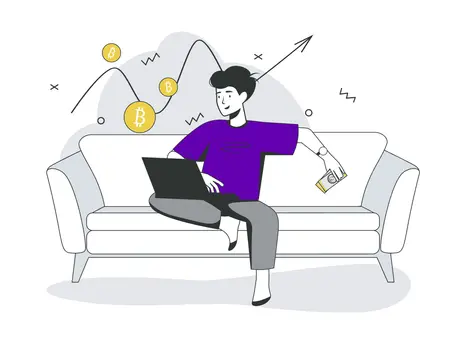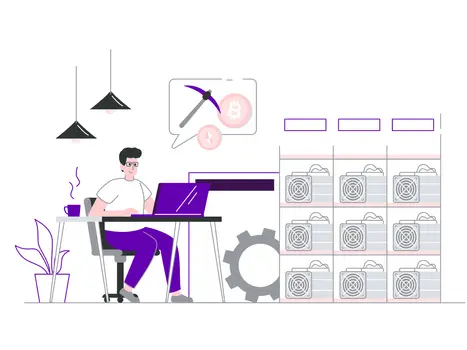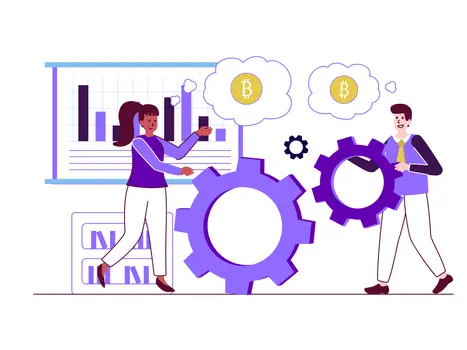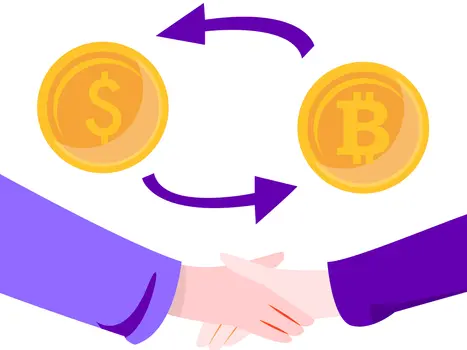What is Polygon? A lead to MATIC
Polygon is a protocol that uses a second blockchain to handle transactions on Ethereum's network, and has its own cryptocurrency, MATIC.

What is Polygon?
The Polygon protocol is an attempt to address Ethereum's scalability problems. To get around these issues, the Polygon network handles transactions on a second blockchain that works with Ethereum. After processing, send transactions back to the main Ethereum network. The amount of traffic sent across Ethereum's network is reduced using this method. Thus, Polygon can expedite transactions while simultaneously reducing transaction costs to the penny range. In other words, Polygon, which used to be called the Matic network, makes it easy to build scalable Ethereum-based blockchain businesses.
Also, Polygon allows users to interact with any DApp without experiencing slowdowns in the network.
This guide goes into detail about the Polygon Matic network, how Polygon works, and how this new solution is making Ethereum easier to use.
Who started Polygon?
Polygon has firmly established itself as the most promising Ethereum scalability project thanks to its highly skilled development team. Polygon's growth is still being driven by the expertise of the team.
The three people who made Polygon
Jaynti Kanani, one of the company's founders, is now the CEO of Polygon. He worked on the project with co-founder and chief operating officer Sandeep Nailwal and co-founder and chief product officer Anurag Arjun. In 2017, the three of them made Polygon. It was called Matic Network back then.
At first, the business was helped by money from friends and family in Mumbai. But even though Polygon started in India, it continues to attract investors from all over the world. In 2019, Polygon raised more than $450,000 in two rounds of funding for its new business. Several investors have put about $450 million into the project.
Angel investor Balaji Srinivasa and billionaire Mark Cuban are two of the people who are helping Polygon grow.
Is MATIC the same thing as Polygon?
Before February 2021, when the name was changed to Polygon, the project was called Matic network. The main thing that the Matic network had to offer was plasma sidechains.
Plasma chains are similar to side chains, but they are more secure and easier to use. Unlike sidechains, Plasma chains publish their "root" on Ethereum layer 1 and work on the assumption that its consensus mechanism can fail. This design gives more security, but these chains can't do complicated things because of it.
Polygon chose to keep the ticker MATIC for its native token after the project grew. So, Matic changed its name to Polygon. This name change and the rebranding that will come after it may cause some confusion, but they are both for the same project. The Matic network is one of the projects that will now fall under the Polygon umbrella. The MATIC token, on the other hand, is Polygon's own cryptocurrency.
How Polygon work?
A certain number of transactions can be done per second on the Ethereum blockchain. For the base layer, the rate of throughput is about 14 transactions per second. On Ethereum, each transaction has costs that are called "gas fees."
When there is a lot of traffic on the network, gas fees go up, and Ethereum gas fees can quickly reach over $50 to $80. This is a huge problem. Since you have to pay more than $50 for each transaction at once, most people can't use Ethereum.
Network congestion also slows down the way the Ethereum blockchain works, which makes people less likely to use smart contracts on the blockchain.
So, how does Polygon do this for less money? Scaling solutions like Polygon process transactions on side chains to cut down on gas costs. Polygon could handle up to 65,000 transactions per second, but Ethereum can only handle about 17 transactions per second.
And Polygon can charge users just a few cents for these fees. Compare this price to Ethereum, where the average transaction fee is around $15. Since Polygon is a set of different protocols, including the zero-knowledge (zk) proof type, users can choose the best scaling option for their needs.
The most popular ways for project teams to use Polygon to integrate are plasma sidechains, a proof-of-stake (PoS) blockchain bridge, zk rollups, and optimistic rollups. Matic started out with plasma sidechains, which are lighter and safer.
A plasma chain is a separate blockchain that runs along with the main blockchain, just like a sidechain. Ethereum is the “primary” or “parent” blockchain in this case. Plasma chains connect to the main blockchain and talk to it so that assets can safely move between them.
Polygon knows that there is no best solution that works for all applications. Each scaling solution comes with tradeoffs between security, sovereignty, transaction fees and transaction speed. Developers should be able to choose the scaling solution that works best for their app. And Polygon's scaling solutions are the most complete.
Why is the Polygon MATIC token needed?
MATIC is Polygon's own digital currency. The PoS consensus mechanism is what makes the polygon plasma chains work. All transactions on the plasma chains will be paid for with MATIC. So, the demand for MATIC goes up the more projects use Polygon as a scaling solution.
MATIC also acts as a governance token by giving its owners the right to vote on which of the many planned scaling solutions should be put into place.
Holders of the token can vote on whether a new layer-2 scaling solution should be added to Polygon's products if the community likes it and wants Polygon to use it. So, governance voting lets people with MATIC tokens decide what will happen to Polygon.
Digitra.com will list MATIC soon, so you can trade it with no fees and get DGTA token rewards.
How to buy Polygon MATIC?
The crypto $MATIC is available on digitra.com, an exchange that offers offers an airdrop for new users, where anyone who signs up and verifies their account will receive 10 $DGTA tokens. The $DGTA token is also distributed daily among clients who trade on the platform, so you can accumulate more $DGTA in your wallet as a reward for trading on Digitra.com. Click here to download the app and open your account!




